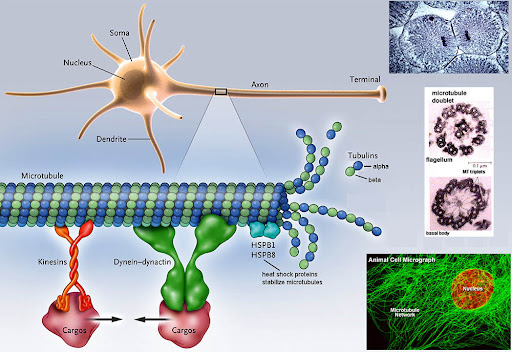
Long-term toxic exposure doesn’t always make headlines right away. In many cases, the effects unfold slowly, sometimes over decades, before patterns emerge and accountability is demanded. Across different sectors, workers and nearby communities have lived with consequences tied to harmful chemicals and delayed regulatory responses.
This article looks at three industries in the business world where professionals are constantly exposed to toxic chemicals over the long term.
I. Firefighting: The Hidden Costs of Protection
Firefighting has always been dangerous, with firefighters having to face skin diseases, potential hearing loss, and musculoskeletal injuries. An NCBI study s firefighters die at a higher rate than workers in other professions in the USA. For instance, a high risk of thermal stress and anxiety involved in the occupation is associated with cardiac deaths.
However, the risks extend beyond smoke and flames. Over the years, firefighters have been exposed to substances meant to save lives, only to discover they might also cause harm. A key example is aqueous film-forming foam, commonly known as AFFF.
According to TorHoerman Law, this firefighting foam is primarily used to suppress fuel fires. While extremely effective at suppressing fires, AFFF contains perfluoroalkyl and polyfluoroalkyl (PFAS) compounds. They are called “forever chemicals” because they don’t easily break down in the environment or the body.
The health concerns tied to PFAS exposure have led to growing scrutiny. Scientific reports have linked the compounds to cancer, liver damage, and developmental issues. This has triggered a wave of legal actions involving manufacturers and distributors of the foam.
The AFFF foam lawsuit has become one of the most prominent examples of occupational exposure, sparking widespread litigation. Plaintiffs include firefighters, military personnel, and communities near training facilities. They claim that they were never warned about the product’s long-term health effects.
II. Manufacturing: A History Written in Solvents and Dust
From metal plating to electronics assembly, manufacturing has long involved solvents, heavy metals, and particulate matter. Proper ventilation and protective gear were not standard in many plants, especially before the 1980s. Workers regularly came into contact with substances like trichloroethylene (TCE), perchloroethylene (PCE), asbestos, and lead, each with a well-documented health toll.
All these chemicals can cause fatal diseases among workers. For instance, TCE and PCE are linked to health issues like:
● Kidney cancer
● Bladder cancer
● Non-Hodgkin lymphoma
● Cardiac defects
According to Down to Earth, the US Environmental Protection Agency has also taken strong steps to prevent its use in manufacturing. The agency has made final announcements on banning the manufacturing, processing, and use of TCE and PCE.
The manufacturing sector’s struggle with toxic exposure wasn’t always obvious. Symptoms developed slowly, and employers often contested or downplayed links between chemical exposure and health effects. Establishing these connections in courtrooms and medical journals took years of persistence, scientific research, and collective action.
The shift didn’t come quickly. Even today, some smaller operations still operate in regulatory gray areas, using outdated safety standards or sourcing chemicals with incomplete safety data. While larger manufacturers have improved their practices, the burden of past exposure still weighs heavily on former workers and their families.
III. Agriculture: Pesticides and the Cost of Crop Protection
Agriculture might seem like a clean and natural occupation, but the reality of modern farming tells a different story. Since the mid-20th century, pesticides have been widely used to maximize crop yields and protect against infestations. While these products have undeniably boosted food production, their long-term impact on human health has raised serious concerns.
Farmworkers are often the first to experience the effects of pesticide exposure. Skin conditions, respiratory problems, and fertility issues have been common. Over time, more severe outcomes such as Parkinson’s disease and cancer have also been observed in farming communities.
Roundup (Glyphosate), one of the most widely used herbicides, has been at the center of high-profile legal challenges. It has been linked to multiple health concerns, including cancer.
Beyond the fields, nearby water supplies and air quality have suffered from pesticide drift and runoff. Children growing up in agricultural areas sometimes experience developmental delays and other health complications. While some pesticide formulations have been banned or restricted, others remain in use despite mounting evidence of harm.
Frequently Asked Questions
Are there government programs to support workers affected by toxic exposure?
Yes, several federal and state programs support workers who have suffered from chemical exposure on the job. These include workers’ compensation, the Energy Employees Occupational Illness Compensation Program (EEOICPA), and some health surveillance initiatives through OSHA and NIOSH. However, eligibility and support levels vary by industry and location.
How can individuals know if they’ve been exposed to harmful substances at work?
Often, signs of exposure are not immediate. If you work in an industry with known risks, regular health screenings and keeping track of symptoms can help. Medical testing for certain substances, such as blood tests for lead or PFAS, may also be available.
What role do unions play in addressing toxic exposure in the workplace?
Unions have historically played a strong role in pushing for safer working conditions. They often advocate for better protective equipment, improved ventilation systems, hazard pay, and regular health checks. In many cases, unions have also raised awareness and supported legal action related to long-term exposure.
A Pattern That Crosses Sectors
These three industries, firefighting, manufacturing, and agriculture, might seem unrelated on the surface. But they share a common thread: the long delay between exposure and accountability. In each case, chemicals were introduced with promises of efficiency or protection. Only later did their side effects become impossible to ignore.
As more data becomes available and affected individuals step forward, the conversation around workplace safety continues to shift. It’s no longer just about preventing
accidents; it’s also about understanding the long-term impact of what we use and how
we use it.

































